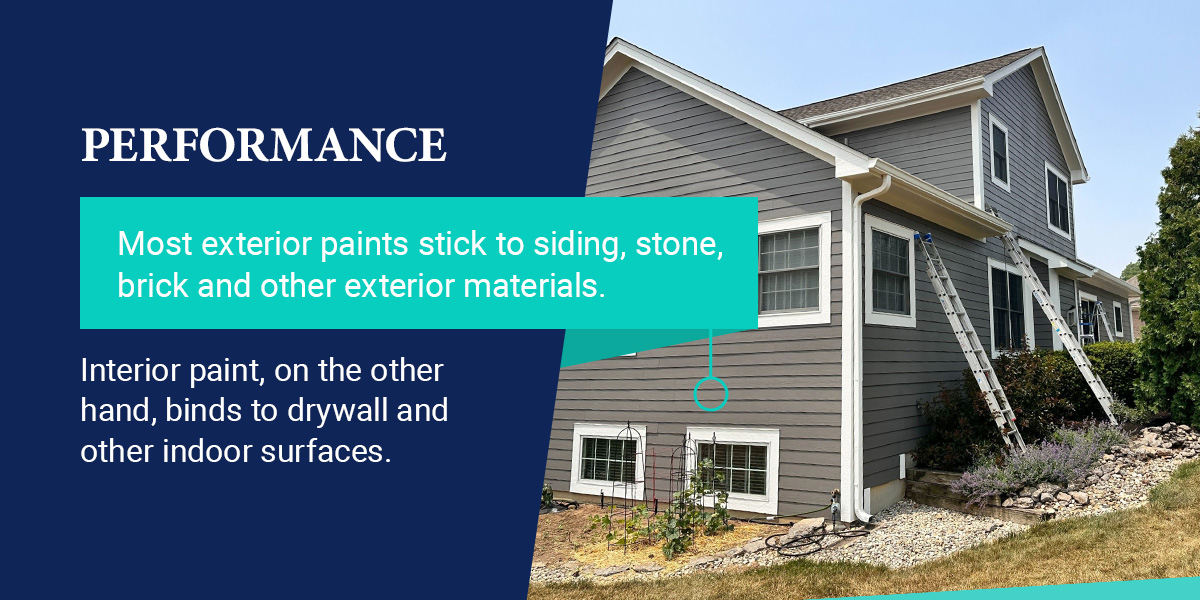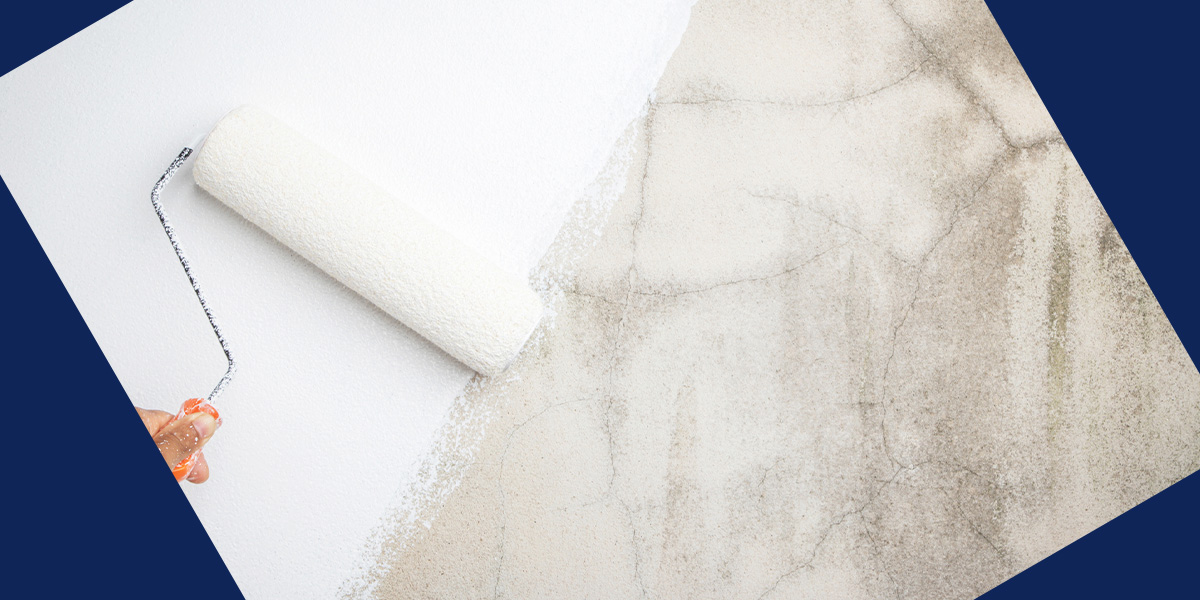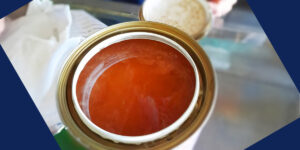Exterior paint is not safe to use inside. While it’s usually a good idea to reuse leftover paint when possible, exterior paint differs significantly from interior paint, and you should not use it inside your house. Many paints contain additives that make the paint effective outside, but the same additives can harm your health when used in enclosed spaces.
Learn more about the risks of using exterior paint inside and what to do if you’ve accidentally used this paint for your indoor project.
Why You Should Not Use Exterior Paint Inside
You should never use exterior paint inside your home — the repercussions can be extremely serious. Always read the labels carefully when choosing paint. Select only products designed for your specific uses. Explore key reasons to avoid exterior paint indoors below.
Health Risks
Both interior and exterior paints include volatile organic compounds (VOCs), chemicals released as gases from the paint as it cures and dries. Exterior paints have significantly higher amounts of VOCs than interior paints since they are weather and fade-resistant. Some exterior paints continue to release VOCs for years after drying.
Manufacturers create paint to cure and settle outdoors. Using exterior paint in confined areas inside your home can lead to high concentrations of VOCs that cause various health issues when inhaled. Some VOCs are classified as carcinogens and can contribute to long-term health risks when individuals have prolonged exposure. Some health risks include:
- Irritation to the eyes, nose and throat
- Headaches
- Nausea
- Dizziness
- Damage to the central nervous system and other organs
Some exterior paints may include additional chemicals to improve their durability and resilience to weather, UV rays, temperature fluctuations and mildew. These additives can be dangerous to inhale, making many exterior paints unsafe to use indoors.
Performance

Most exterior paints stick to siding, stone, brick and other exterior materials. Interior paint, on the other hand, binds to drywall and other indoor surfaces. When you try to apply exterior paint to drywall, it may not adhere properly. You may see more deterioration, cracking and chipping than you would with interior options.
Many exterior paints require UV light to cure properly and outdoor airflow to dry effectively. If you use exterior paint inside, you could have extra long drying times, affecting the final appearance. Paint can become scuffed or smudged while drying, resulting in an uneven look and an undesirable texture on your interior walls.
If you have leftover interior and exterior paints, you may consider mixing them to use up the supplies. You should not mix exterior paint with interior paint, though. They have different formulas — mixing these different types of paint can affect performance and appearance, leading to faster fading, cracking and deterioration.
Wear and Tear
While most exterior paints are durable and resilient for outdoor use, they are unsuitable for indoor wear and tear. Interior environments deal with oils, staining, indoor humidity, scratches and other types of abrasive damage. Interior paint is suitable for this type of wear, but exterior paint is not. It is more likely to get scratched or damaged when used inside.
Interior paints are also washable, especially the types used for kitchens and bathrooms. Most exterior paints are often waterproof and designed to withstand the weather, making them more difficult to clean with indoor products.
Costs
Paint manufacturers use a different process and formula to create exterior paint for interior paint. Many exterior paints have high-quality ingredients that enhance their durability and heavy-duty performance. These ingredients can make exterior paints more expensive than interior options. Using exterior paints for the inside of your home can lead to high and unnecessary costs.
What to Do If You Used Exterior Paint Inside
If you’ve accidentally used exterior paint inside of your home, don’t worry. You can mitigate the health risks of the paint by following these few steps:
- Ventilate the room: You need to ventilate the room as much as possible by opening windows and using fans. This will preserve indoor air quality and push VOCs outside. Prevent odors and fumes from entering the rest of the home by blocking the door and closing air vents.
- Wear protective gear: As you ventilate the room and prepare to paint over the exterior paint, protect yourself against skin irritation and damage from VOCs by wearing the right gear. Gloves and a mask or respirator can minimize how much of the paint you interact with and the fumes you inhale.
- Apply interior primer: Once the exterior paint is fully dry, apply a high-quality indoor primer. This primer will seal the exterior paint and prevent odors and chemicals from spreading throughout the home.
- Repaint the walls: After priming the walls, you can cover them with high-quality interior paint. A new coat of interior paint can improve appearances while mitigating risks from harmful chemicals.
Following this process to seal and cover the exterior paint is critical to protecting your health. If you feel any discomfort or worry about doing this process yourself, you may want to work with a professional, such as The Ohio Painting Company. Professional assistance can also be beneficial when you have respiratory complications or illnesses that prevent you from completing the process yourself.
To support your household’s health, do not spend extended periods near freshly painted spaces. Take breaks by stepping outside to get fresh air. Plan your painting schedule around your family’s routines — choose times when the house is less busy to minimize exposure. Keep children and pets away from the painting area until everything is completely dry.
A painting professional has experience working with interior and exterior paints. They will know how to work with each type safely. As experienced experts, they can effectively prime and repaint your walls to ensure your home is safe and healthy. A trusted painting team can properly ventilate the room to protect the rest of your home from the exterior paint’s odors and fumes.
Get Your Painting Done With the Experts at The Ohio Painting Company Today
When used indoors, exterior paints can put your health at risk and make your walls appear less attractive. Sticking with interior paints is the best way to protect your family while ensuring your home’s interior looks beautiful.
The Ohio Painting Company has extensive experience performing interior and exterior paint jobs for homeowners throughout Dayton, Cincinnati and East Columbus. We pride ourselves on providing transparent, trustworthy and reliable services that ensure your satisfaction. We know how to use exterior and interior paints appropriately to beautify your home.
Contact us today to request an estimate for your next painting project.







